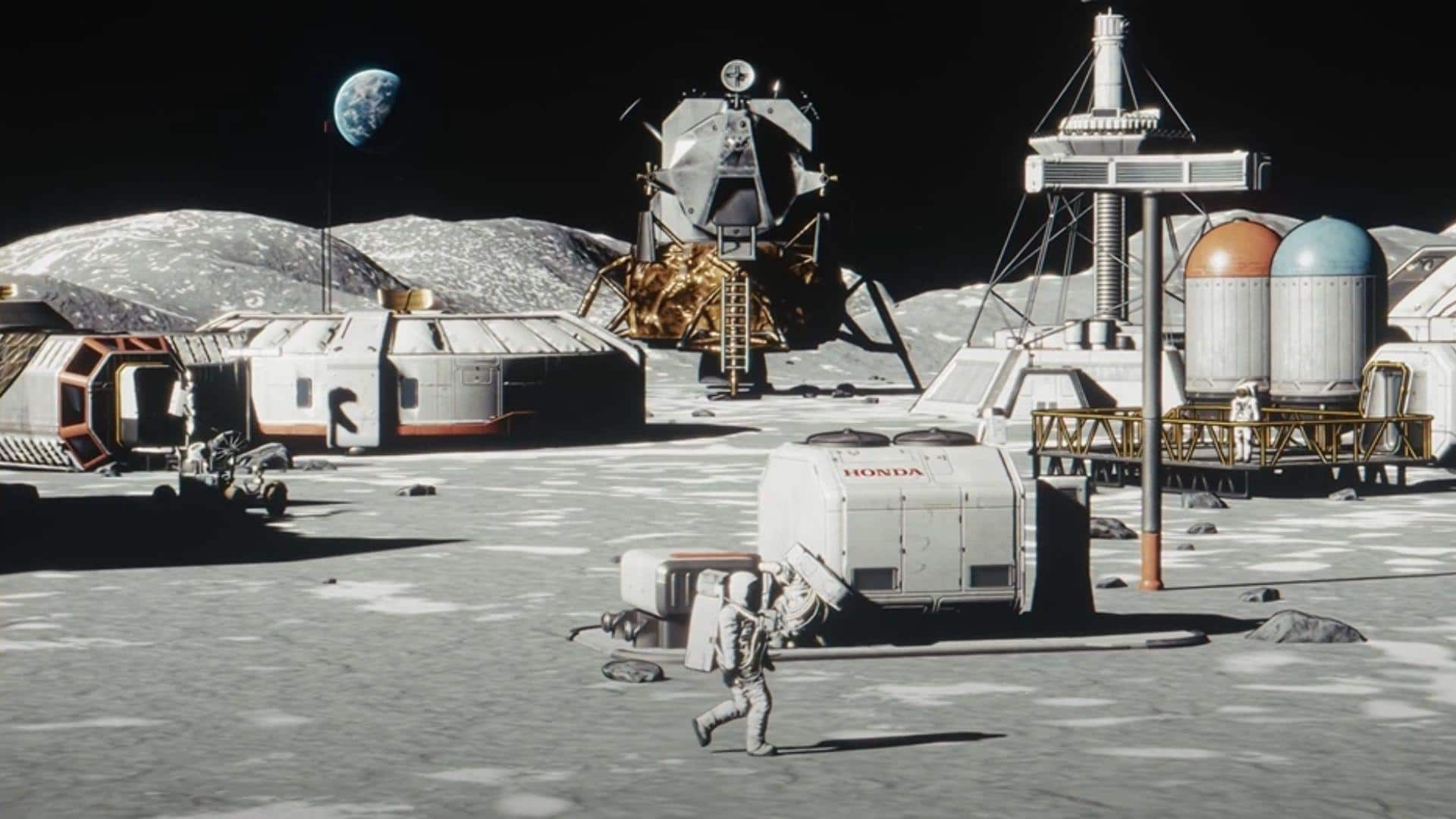
How Honda's hydrogen tech will keep us alive on Moon
What's the story
Honda, one of the top Japanese automakers, is using its knowledge of hydrogen fuel cell technology for an ambitious project to keep humans alive on the Moon.
The company has announced plans to test a renewable energy system on the International Space Station (ISS).
The effort is part of a larger mission to support human life on the Moon. It involves partnerships with US-based Sierra Space and Tec-Masters.
Innovation
Honda's circulative renewable energy system
Honda's innovative approach centers on a high-differential pressure water electrolysis system, which is key to what the company calls a circulative renewable energy system.
This tech would produce hydrogen, oxygen, and electricity continuously - three critical elements for supporting life in harsh off-Earth conditions.
The whole process would utilize solar energy during the lunar day when the Moon receives sunlight.
Night cycle
How Honda's system works during lunar night
The lunar night on the Moon lasts for some 14 days, during which sunlight isn't available. To keep life-support systems running during this time, Honda's regenerative fuel cell is activated.
It uses stored hydrogen and oxygen to generate electricity while keeping some oxygen for breathing.
The leftover oxygen and hydrogen produced during the lunar day are used by Honda's fuel cell system to generate electricity.
Closed-loop
Closed-loop system and ISS testing
Honda's fuel cell system also produces water as a byproduct, which is recycled into the electrolysis loop, forming a closed-cycle system.
This makes it efficient, clean, and scalable for space and Earth-based applications.
To validate its tech in microgravity conditions outside Earth's atmosphere, Honda plans to test the core component of its electrolysis system aboard the ISS with Sierra Space managing transport via its Dream Chaser spaceplane.
Partnerships
Collaboration with US space agencies
The project is part of Honda's vision for a regenerative fuel cell system that could offer advanced energy storage capable of sustaining human life on the lunar surface.
The initiative has also been further bolstered by the establishment of Honda's Space Development Division in late 2024.
This new unit aims to expedite collaboration with US space companies and agencies, including NASA, for future lunar missions under the Artemis program.